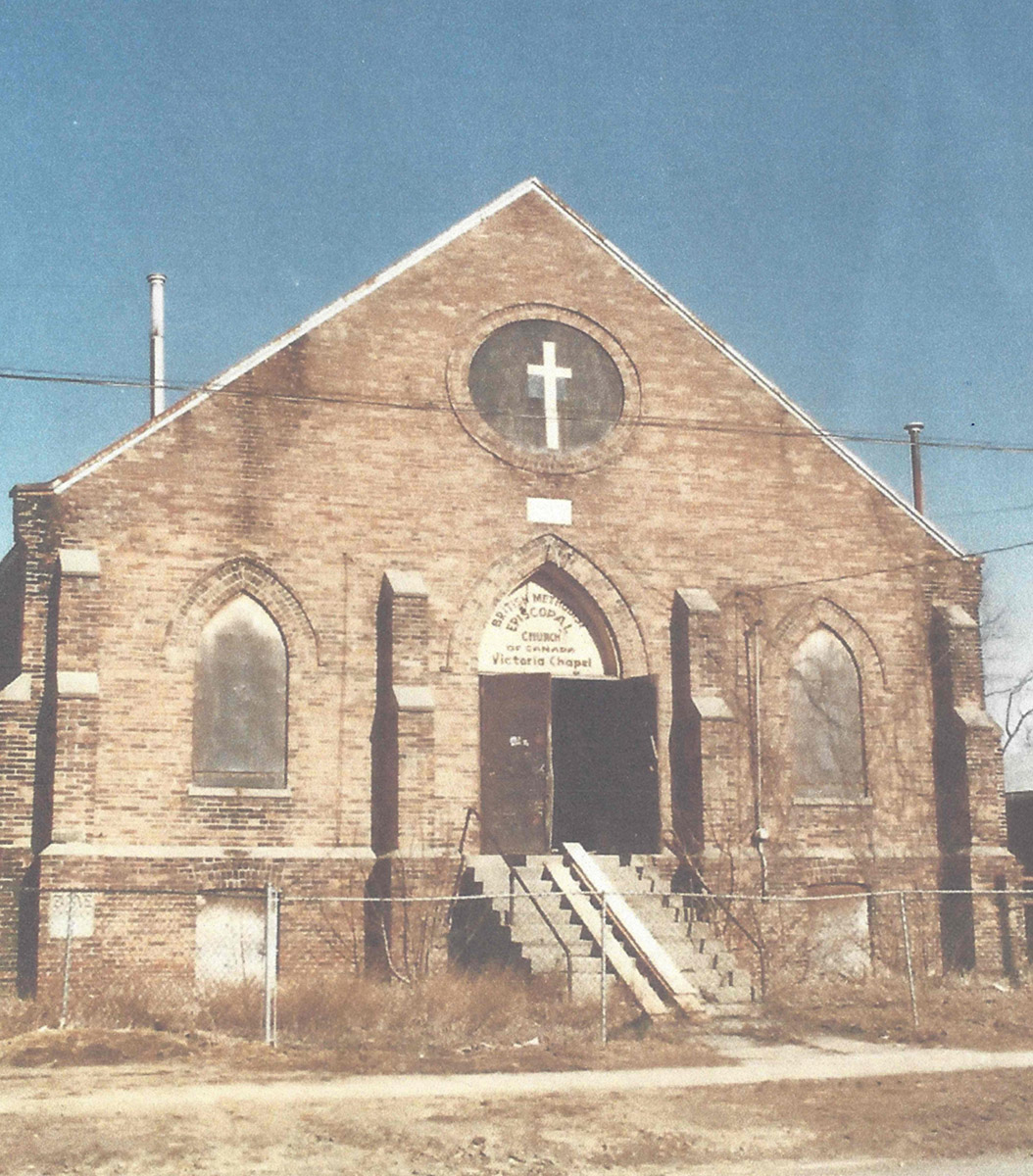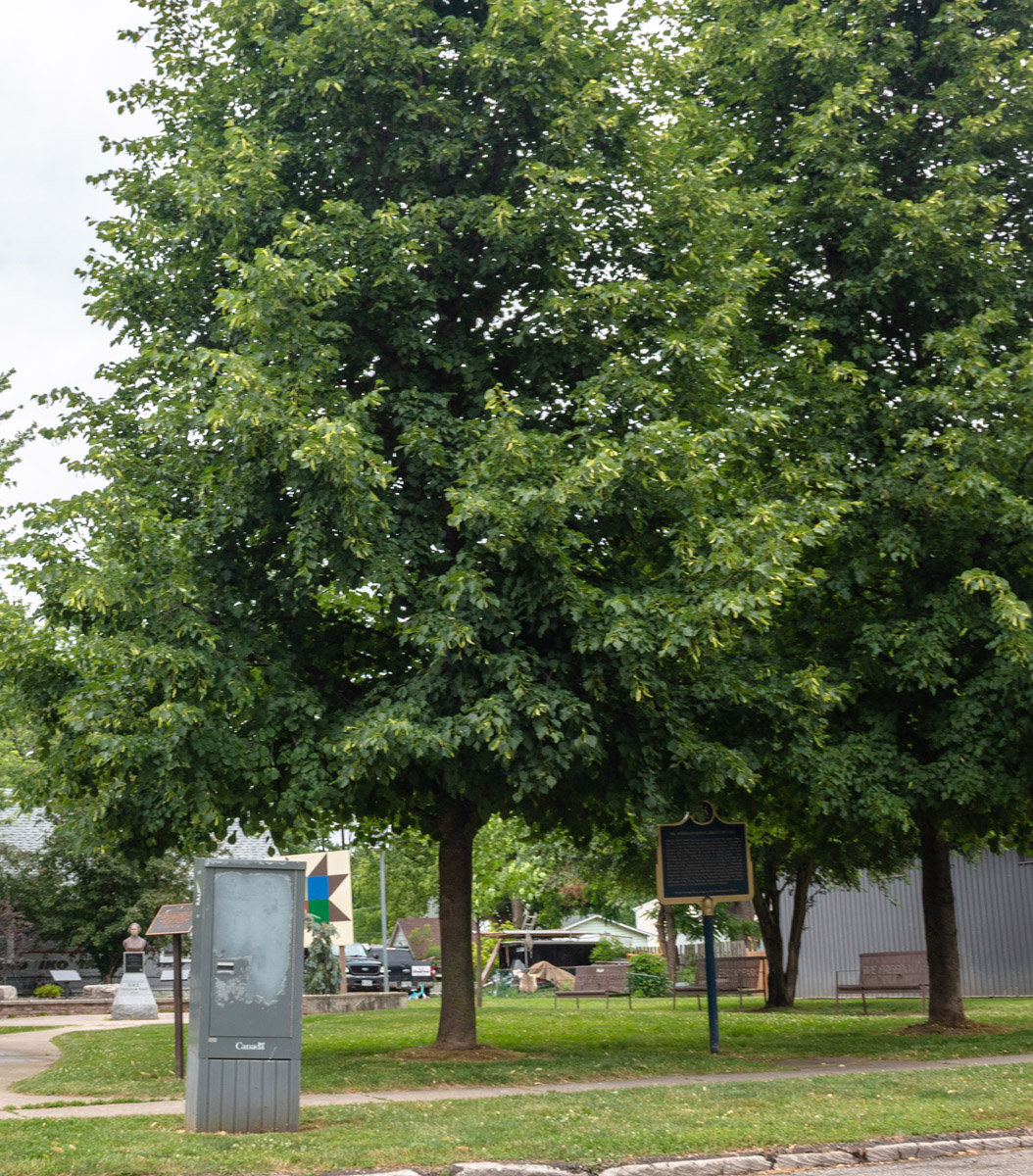The Victoria Chapel
The B.M.E. Church came in to existence in Chatham, Ontario in 1856. Willis Nazrey was the first bishop of the local church. The first B.M.E. Church in all of Canada was built in Chatham in 1857 on Princess Street. The church soon after became known as the “Victoria Chapel”.
* * *
Bishop Nazrey remained the head of the church in Chatham until his death in September of 1875. He was succeeded by Rev. Richard Disney. The church even began publishing a newspaper called “The Missionary Messenger” with the help of Dr. Anderson Ruffin Abbott. Abbott, the first Canadian-born Black doctor to be licensed lived for a time in Chatham.
The British Methodist Episcopal Church in Chatham was the initial spot that abolitionist John Brown held his meeting to gain supporters for his attack on Harpers Ferry. When the church found out the nature of the meeting he was removed and not allowed to use the property again.
When the church began to flourish it outgrew its structure and by 1910, they had built the new brick structure. During a period in the 1930’s until 1958 the church left the B.M.E. Conference and became known as the Community Church. By 1958 it rejoined the conference and kept its doors open until 1980. The building remained until the death of its last church member, Eula Currie who passed in 1988. By 1989 the building was demolished.
In 2009 the BME Freedom Park was established on the vacant lot as part of a community project involving the Chatham-Kent Black Historical Society, East Side Pride, University of Guelph Ridgetown Campus and the Municipality of Chatham-Kent.
The focal point of the park is the bronze bust of Mary Ann Shadd-Cary created by the great-great-great-niece of Shadd-Cary and world-renowned artist, Artis Lane. Parts of the original church were also repurposed throughout the park including the brick surrounding the gardens. The Park layout also includes the demarcation of the church foundation and the outline of the original church is stamped in the walkways.
In the centre walkway, several stones are laid to represent the hundreds of thousands of families torn apart during slavery. The stones lead to a large rock that signifies the path to freedom many slaves took to find a life of liberty in Canada.
The British Methodist Episcopal Church in Chatham was the initial spot that abolitionist John Brown held his meeting to gain supporters for his attack on Harpers Ferry. When the church found out the nature of the meeting he was removed and not allowed to use the property again.
When the church began to flourish it outgrew its structure and by 1910, they had built the new brick structure. During a period in the 1930’s until 1958 the church left the B.M.E. Conference and became known as the Community Church. By 1958 it rejoined the conference and kept its doors open until 1980. The building remained until the death of its last church member, Eula Currie who passed in 1988. By 1989 the building was demolished.
In 2009 the BME Freedom Park was established on the vacant lot as part of a community project involving the Chatham-Kent Black Historical Society, East Side Pride, University of Guelph Ridgetown Campus and the Municipality of Chatham-Kent.
The focal point of the park is the bronze bust of Mary Ann Shadd-Cary created by the great-great-great-niece of Shadd-Cary and world-renowned artist, Artis Lane. Parts of the original church were also repurposed throughout the park including the brick surrounding the gardens. The Park layout also includes the demarcation of the church foundation and the outline of the original church is stamped in the walkways.
In the centre walkway, several stones are laid to represent the hundreds of thousands of families torn apart during slavery. The stones lead to a large rock that signifies the path to freedom many slaves took to find a life of liberty in Canada.


